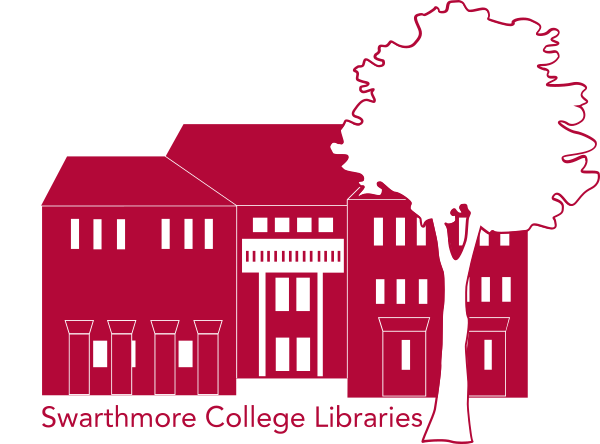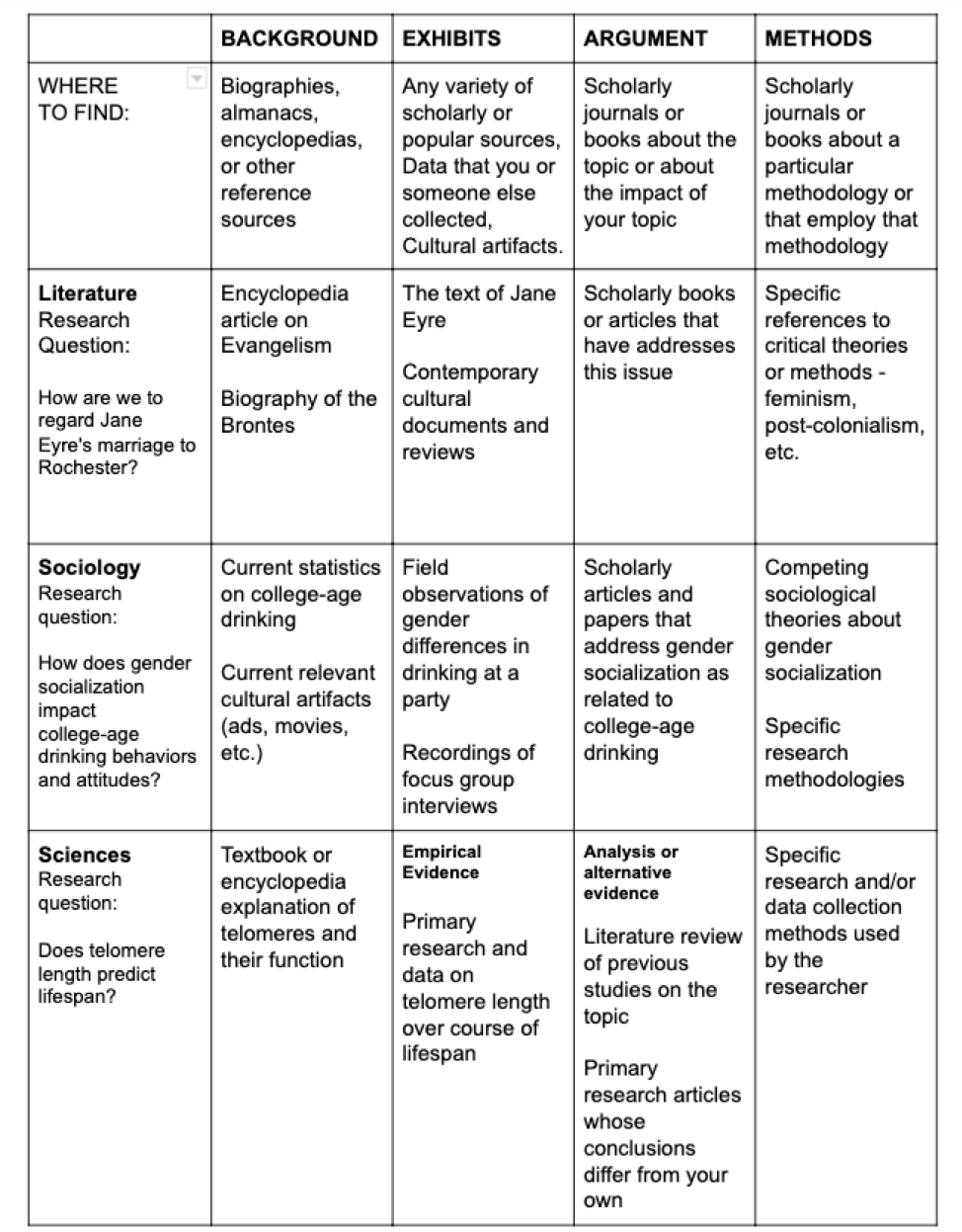Research and The Libraries

S3P 7.25.19
+ Introduction to the libraries
+ What is research?
+ How do we find it?
What are we doing here?

Resources
Advice
Services
Spaces
{Subscriptions, Books, Journal Articles, Databases}
{Research help from librarians + RIAs}
{Requesting articles, Borrowing books from other libraries}
The Libraries
{McCabe, Cornell, Underhill}
(+ a lot more!)
What is Research?
process
(something you do)
stuff
(something you find)
"I’m studying drosophila to determine whether odor changes mating behavior."
"I'm looking for articles on
olfactory response in the mating behavior of drosophila."
Kinds of resources
- Print books
- Print journals
- eBooks
- Online journals
- Articles
- Book chapters
- Data and Statistics
- Maps
- Magazines and Newspapers
- DVDs and streaming video
How do we find them?
-
research guides
-
databases (Web of Science, JSTOR)
-
scholar.google.com
- How were the books similar?
- How were they different?
- Does that tell you anything about how books are arranged in the library?
McCabe Homework Review
What about articles?
Some resources for
finding scholarly articles:
Tripod
Web of Science
Google Scholar
What about articles?
Tracing Leads: Article to Article
Open Niobe Way and Joseph Nelson's book chapter. Chapter title: "The Listening Project: Fostering Curiosity and Connection in Middle Schools."
Go to page 288.
Locate the sentence that includes note #30.
Go to the notes section (end of the chapter). Find note 30.
Understanding notes:
Identifying types of sources
Journal Article
Author, A. A. (Year). Title of Article. Title of Journal, Volume # (Issue #), Page #s, doi:xx.xxxx/xxxxxx
Carol Gilligan, "The Listening Guide Method of Psychological Inquiry," Qualitative Psychology 2, no. 1 (2015): 69-77
Alisha Ali, "A Framework for Emancipatory Inquiry in Psychology: Lessons from Feminist Methodology," Race, Gender, and Class 13, nos 1-2 (2006):1-14.
Author, A. A. (Year). Title of Article. Title of Journal, Volume # (Issue #), Page #s, doi:xx.xxxx/xxxxxx
Other common source types: Books, Book Chapters,
Conference Presentations, Videos
Understanding notes:
Identifying types of sources
Book
Carol Gilligan, Joining the Resistance (Cambridge: Polity Press, 2011).
Book Chapter
Author, A. (Year). Title of chapter. In E. E. Editor (Ed.), Title of book (pp. xxx-xxx). Location: Publisher.
Book
Author, A. (Year). Title of work. Location: Publisher.
What about articles?
- Find the full PDF of this article using Tripod or Web of Science.
-
Compare what you find:
- What did you search?
- Number of results?
- Can you access the full text?
- Are there any cited references?
Dumas, M. J., & Nelson, J. D. (2016). (Re)Imagining Black Boyhood: Toward a Critical Framework for Educational Research. Harvard Educational Review, 86(1), 27–47. https://doi.org/10.17763/0017-8055.86.1.27
{ specialized research tools }
((arab*) AND (world OR popul* OR people*)) AND ((sign) AND (language))
Sign language in the Arab world
How you talk
How a database talks
But first ...
American Sign Language
Derogatory
Nickname
ASL
Sign Language
insult
epithet
moniker
Derogatory Nicknames in American Sign Language
OR
AND
OR
OR
AND
("american sign language" OR ASL OR "sign language")
AND (derogatory OR insult)
AND (nickname OR epithet OR moniker)
Activity
Decide on a search query
from the article by Nelson.
Search the same query using
Tripod, Web of Science
and, Google Scholar.
Compare your results with a neighbor.
Discussion Questions & Posting
1. What was each person's query?
Put the person's name by each query.
2. Whose query returned more results?
Write their name.
3. For the entry that returned the most results, what are the top 3 articles listed from each database?
Put the database name next to the three articles.
Post your answers to these questions here:
B / E / A / M
Writers rely on background sources, interpret or analyze exhibits, engage arguments, and follow methods.
Bizup (2008)
Exhibit (Evidence)
Background
Materials used to establish facts. Implies membership in a community based on shared references
The materials to be analyzed, examined or interpreted
Argument
Sources you engage with or respond to directly by countering, extending or refining the claims made
Method (Model)
Using a source's way of analyzing an issue to apply to your own issue
B/E/A/M examples

(handout)
Practice using BEAM
The interviewer asks "thick" questions---rooted in Geertz's distinction between "thick" and "thin" interpretations (21) -- that get at the nuances and details of an experience.... [Page 278]
21. Clifford Geertz, The Interpretation of Cultures
Method
In this sentence, Way and Nelson cite Geertz's book to show how they are using his approach to interpretation to guide their own.
1
Practice using BEAM
A longitudinal study in New York City reveals that 55 percent of teachers who entered middle schools between 2002 and 2009 left those schools within 3 years. (3)
3. William H. Marinell, "The Middle School Teacher Turnover Project...
Background
In this sentence, Way and Nelson use Marinell's research as a background source - introducing the situation and problem their research will focus on.
2
Practice using BEAM
Rather than starting from the belief, evident in many middle schools, that education is about filling empty vessels (i.e. heads and/or brains) with information... (12), our project starts from a more expansive set of beliefs.... [Page 275]
12. Paolo Freire, Pedagogy of the Oppressed
Argument
Way and Nelson cite Paolo Freire's Pedagogy of the Oppressed in order to build on his analysis of educational systems.
3
Citation Guide
Thank you!
Lorin Jackson (ljackso1)
Resident Librarian for Research and Instruction
Sarah Elichko (selichk1)
Social Sciences and Data Librarian
Andrea Baruzzi (abaruzz1)
Science Librarian